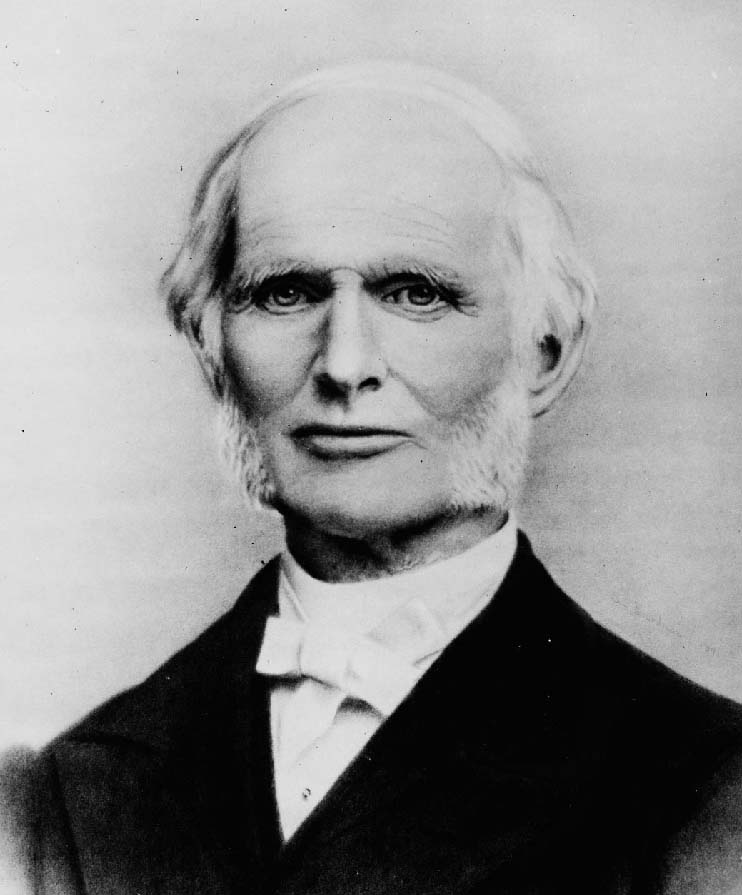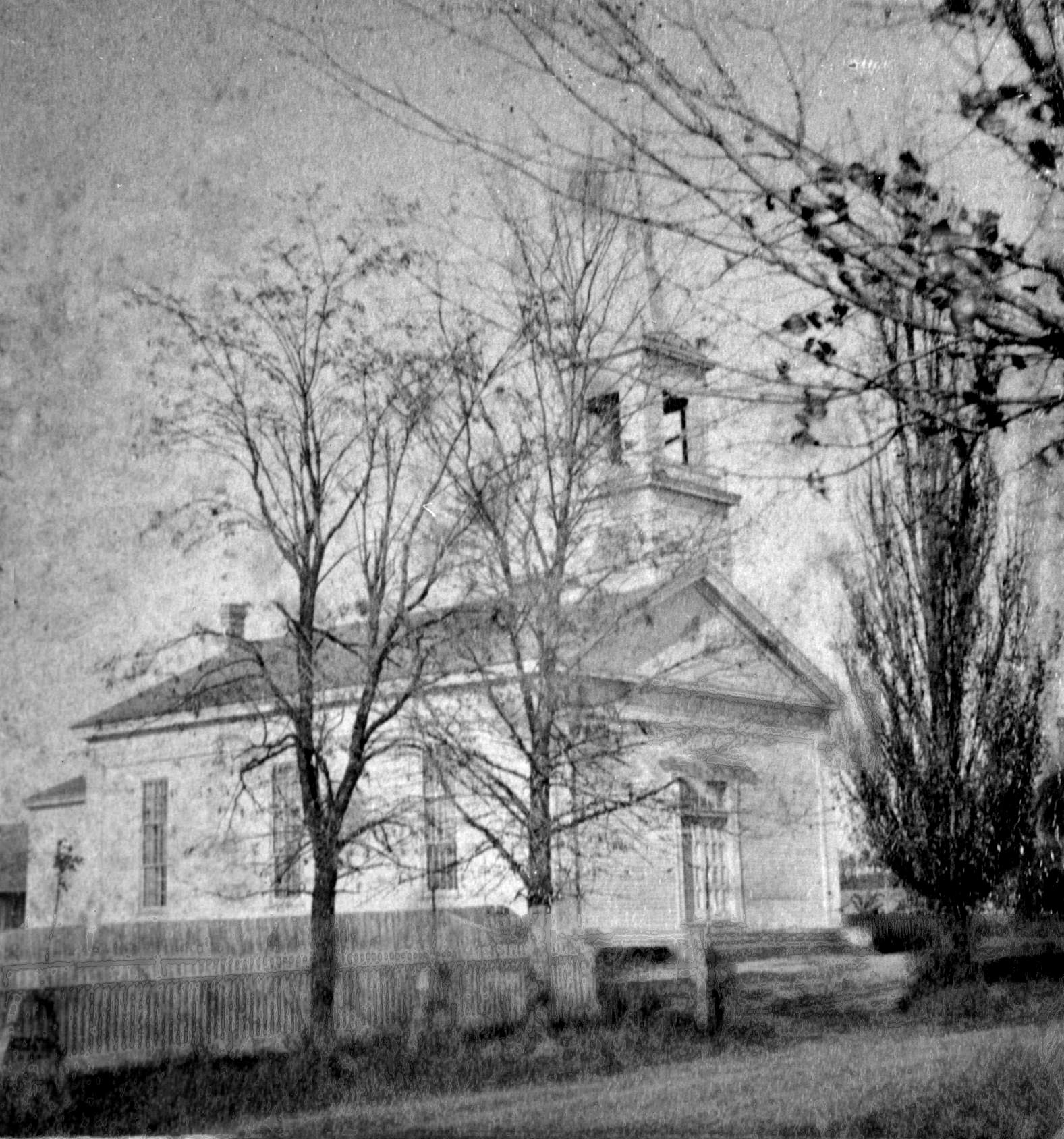Sesquicentennial
History, part 3
Growing
Stability, 1845-1873
The Reverend Luther Clapp,
 a
young graduate of Williams College and Andover Theological
Seminary, came to the Wauwatosa Area in 1845 in the service of
the American Home Missionary Society. He preached his first
Wauwatosa sermon on July 20, 1845 in the unfinished barn of
William Fisher, and served the Wauwatosa Congregation as a supply
minister until 1848 when he accepted the official call to its
pulpit.
a
young graduate of Williams College and Andover Theological
Seminary, came to the Wauwatosa Area in 1845 in the service of
the American Home Missionary Society. He preached his first
Wauwatosa sermon on July 20, 1845 in the unfinished barn of
William Fisher, and served the Wauwatosa Congregation as a supply
minister until 1848 when he accepted the official call to its
pulpit.
The arrival of the man
nineteenth-century Wauwatosans called "Father Clapp" as
the Church's minister must be reckoned as one of the most
important events in the history of the young congregation. Clapp
brought an unusual growth and stability to the young
congregation. When financial difficulties forced many frontier
Congregational churches to depend for years on the American Home
Missionary Society for pastoral salaries and other needs, this
Church grew rapidly into a fiscally independent body under Mr.
Clapp's leadership. Times were not always prosperous, of course:
the Congregation paid Mr. Clapp $600 for the year in 1856 and
"what we can" in 1858. Nevertheless, the first every
member canvas occurred on February 5, 1848 and revenues rose to
the point that the Church could undertake its first benevolence
with a donation of $100 to Beloit College in 1851.
As membership grew during the
the Clapp pastorate, it became possible to finance and build a
permanent sanctuary for the Church and to end its itinerant use
of school buildings and other meeting places. The congregation
purchased a plot of land covered in a blackberry patch for $50
from Charles Hart in 1853 and began the construction of its first
sanctuary on the present site of the Church.
 Members donated
timbers for a structure that was built and furnished at a cost of
$3,347.80 when it was dedicated on October 27, 1853. A bell had
to be added later, in 1855. The completion of the Church building
permitted the congregation to have its own Sunday School and to
end weekly participation in a joint Sunday School endeavor with
Methodists and Baptists. Nevertheless, a warm relationship
continued with the Baptists who founded Wauwatosa's second oldest
church (founded October 11, 1845; now Underwood Memorial Baptist
Church) and were led from 1849-1887 by Mr. Clapp's good friend,
the Reverend E. D. Underwood. Well into the 1860s
Congregationalists and Baptists joined for bimonthly Sunday
School concerts. The Church held Sunday School in this period
between morning and afternoon services, and often as many as 120
adults and children attended.
Members donated
timbers for a structure that was built and furnished at a cost of
$3,347.80 when it was dedicated on October 27, 1853. A bell had
to be added later, in 1855. The completion of the Church building
permitted the congregation to have its own Sunday School and to
end weekly participation in a joint Sunday School endeavor with
Methodists and Baptists. Nevertheless, a warm relationship
continued with the Baptists who founded Wauwatosa's second oldest
church (founded October 11, 1845; now Underwood Memorial Baptist
Church) and were led from 1849-1887 by Mr. Clapp's good friend,
the Reverend E. D. Underwood. Well into the 1860s
Congregationalists and Baptists joined for bimonthly Sunday
School concerts. The Church held Sunday School in this period
between morning and afternoon services, and often as many as 120
adults and children attended.
Mr. Clapp's influence both
within and outside the Church was great. He was particularly
interested in young people; he began prayer meetings out of which
grew the congregation's first youth groups, and he initiated a
preparatory school in his parlor that was the community's first
high school. Mr. Clapp also chaired the Milwaukee Home Missionary
Committee from 1850 to 1879 and in that capacity preached widely
outside of Wauwatosa and held numerous revivals. During the
pastorate of this energetic man the Wauwatosa congregation grew
substantially (See Appendix for Membership).
Those nineteenth-century Church
members involved themselves in a number of causes. The choir was
a central part of the Church's life from the first. Oliver Damon
was the first master of a choir that initially sang a capella and
then to the accompaniment of a melodeon. Oddly, the choir
originally sat in the rear balcony of the 1853 Church, and the
congregation turned around to face the choir during hymns.
The first women's group, the
Maternal Association, emerged in 1843 as an organization of
mothers and children of this Church and the Baptist and Methodist
Churches. It provided monthly opportunities for Bible reading and
fellowship. Its service activities included an annual
"donation party" or covered dish supper, the Annual
Meeting dinner (held until 1917 on New Year's Day!) and
fundraising projects for the Church and missions. The Maternal
Association ended as a group in 1864 and several women's groups
emerged in its place within the Church. The Ladies Aid and the
Women's Missionary Society provided fellowship for women and
fundraising for the Church and its benevolence from 1869 until
the founding of the Woman's League in 1907.
Women particularly supported
the cause of temperance, an important cause of nineteenth-century
Congregationalists. Indeed, many church members involved
themselves in the temperance organizations of the day, the Good
Templars, the Sons of Temperance, and the Women's Christian
Temperance Union founded in 1874.
Perhaps the greatest national
issue of the Clapp pastorate, however, was that of slavery.
Anti-slavery sentiment was strong in Congregationalism; some of
the nation's leading abolitionists, like Henry Ward Beecher, were
Congregational clerics. In the Wauwatosa church, as its original
covenant attested, anti-slavery sentiment also was strong. Mr.
Clapp's son recalled in the Church's seventy-fifth anniversary
history that Wauwatosa Congregationalists established a local
stop on the Underground Railroad, joining with others in Beloit,
Milton, Milwaukee, Pewaukee, and Waukesha. When the Civil War
broke out, 27 members of the Church served with in the Union
army, the congregation's women devoted themselves to assisting
the war effort, and the Church was the site of patriot meetings
that included as speakers the abolitionist Edward D. Holton, the
Watertown Republican leader Carl Schurz, and Wisconsin Senator
James R. Doolittle.
When the Civil War ended in
1865, no one in Wauwatosa could have anticipated the accelerating
number of changes that would overtake First Congregational Church
in the next five decades. By the time of the Church's
seventy-fifth anniversary in 1917, First Congregational Church
would find itself a much different congregation in a much changed
world.
Next Page: No Longer a
Frontier Church 1873-1921
Back to History Page:
A
Sesquicentennial History

 a
young graduate of Williams College and Andover Theological
Seminary, came to the Wauwatosa Area in 1845 in the service of
the American Home Missionary Society. He preached his first
Wauwatosa sermon on July 20, 1845 in the unfinished barn of
William Fisher, and served the Wauwatosa Congregation as a supply
minister until 1848 when he accepted the official call to its
pulpit.
a
young graduate of Williams College and Andover Theological
Seminary, came to the Wauwatosa Area in 1845 in the service of
the American Home Missionary Society. He preached his first
Wauwatosa sermon on July 20, 1845 in the unfinished barn of
William Fisher, and served the Wauwatosa Congregation as a supply
minister until 1848 when he accepted the official call to its
pulpit.